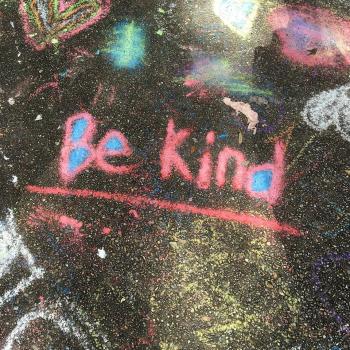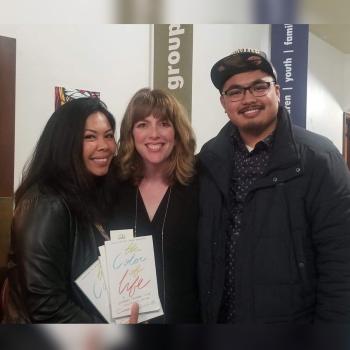A lot of the work I do is around equipping parents and caregivers to talk to their children about race. Whether these conversations happen on a stage, in a school cafeteria or at a private backyard event, engaging in the conversation “early, often and honestly” is key – for all of us and for all of our children. This is part 3 of a 5-part series based on a series of workshops.
—

Sometimes I think it’s obvious, but then I reflect back on my own journey – on the journey I’m still on, on the journey I’ll always be on. And I realize that the “it” of entering into conversations of race with our children sometimes needs to be spelled out for people, myself included.
The indomitable Myisha and I can encourage our audiences to engage now and to let mediums of books and television help parents and caregivers along the way, but if we don’t also encourage the grown-ups among us to enter into understanding their own journeys of racial identity, well, then we haven’t done the conversation justice.
After all, talking to kids about race starts with talking to ourselves about race. It starts with really, actually digging into an answer to the question, “Who am I?”
I write about this in my book, but when I was in high school, I remember creating an identity quadrant for youth group one day. I filled each of the four sections with different facts about who I was as a sixteen-year old: I have a bubbly and effervescent personality! I am a friend to everyone! I love Jesus, Young Life, my friends, and my family! I am an employee at Izzy’s Pizza! I am an aspiring college student! I am a singer, an actor and a musician!
I was all of these and more, every exclamation points included.
But as a high school student, nowhere in that quadrant did I include “white” or “European American,” mostly because I didn’t believe my racial identity mattered to who I was as an individual. It wasn’t that I didn’t hold a perspective on race, but as I write about in The Color of Life, mine was “…a perspective I hadn’t much thought about or wanted to engage in, even if I hadn’t really thought it applied to me” (6).
For all of us, though, entering into conversations about race with kids means entering into an awareness of our own relationship with issues of justice, race and privilege. So, once again, the invitation is extended from me to you to enter in and join the conversation.
No matter your race, ethnicity or culture, dig in. Whether it’s the first time or the hundredth time, you’re entering into conversations about this crucial part of your identity, as a parent or caregiver, consider this your opportunity to learn alongside your child!
After all, we get to be learners with the young people in our lives. We get to dig into our own racial identities, and we get to take it a step further and learn more about what it means to operate in our skin in the world today.
It’s an invitation generously handed to us to read and examine and enter into who we are as individuals in our country.
So, indulge me, just for a second as I put on my former high school English teacher hat. Sit down and read the poem, “I, Too” by Langston Hughes. Think about what it means to be you, in your skin, in the United States today …and think about what it meant to be Hughes, in his skin, in the United States then and what it also means now.
I, too, sing America.
I am the darker brother.
They send me to eat in the kitchen
When company comes,
But I laugh,
And eat well,
And grow strong.Tomorrow,
I’ll be at the table
When company comes.
Nobody’ll dare
Say to me,
“Eat in the kitchen,”
Then.Besides,
They’ll see how beautiful I am
And be ashamed-I, too, am America.
Really, Hughes was asking (and then answering) the question, “Who am I?” which is also the question I invite you to answer today too. Because when it comes to talking with kids about race, the question often starts with us.
To the conversation!
—
So, who are you? How would you fill in the spaces of the identity quadrant? And how does understanding your racial identity better help enter into conversations of justice, race and privilege with the young children in your life?
*Post contains Amazon Affiliate links












